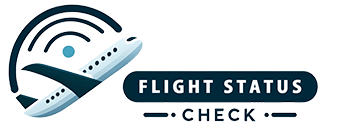The 2013 Flight Status: A Look Back at a Momentous Year in Aviation
The year 2013 was a significant one for the aviation industry. From technological advancements to safety improvements, this was a year that brought about significant changes and milestones in the world of air travel.
One of the most notable developments in 2013 was the introduction of the Boeing 787 Dreamliner. This state-of-the-art aircraft was designed to revolutionize air travel with its advanced technology and improved fuel efficiency. However, the Dreamliner also faced its fair share of challenges, with several incidents of battery malfunctions and fires prompting a temporary grounding of the fleet. Despite these setbacks, the Dreamliner eventually returned to service and continues to be a staple in many airlines’ fleets.
Another major event in 2013 was the merger of American Airlines and US Airways, creating the world’s largest airline. This union marked a significant shift in the competitive landscape of the industry, with the combined entity now offering an extensive network and a more streamlined passenger experience. The merger also sparked a trend of consolidation within the industry, as other airlines sought to strengthen their positions through similar partnerships and acquisitions.
On the safety front, 2013 saw continued efforts to improve air travel security and protocols. This was particularly evident in the wake of the Asiana Airlines Flight 214 crash in San Francisco, which claimed the lives of three passengers and injured many more. The incident prompted a re-evaluation of pilot training and cockpit procedures, leading to a renewed emphasis on crew resource management and enhanced training standards.
In the realm of aviation technology, 2013 saw the continued evolution of in-flight entertainment and connectivity. Airlines began to roll out Wi-Fi services on more flights, allowing passengers to stay connected even at cruising altitudes. Additionally, advancements in on-demand entertainment systems made it easier for travellers to access a wide range of movies, TV shows, and music during their flights.
However, 2013 was also a year marred by tragedy, with two major aviation disasters sending shockwaves through the industry and the world at large. The first of these was the crash of Asiana Airlines Flight 214 in San Francisco, which occurred on July 6, 2013. The Boeing 777 aircraft, which was en route from Seoul, South Korea, struck a seawall at the end of the runway while attempting to land, resulting in the tragic loss of three lives and injuring over 180 passengers.
The second major disaster of 2013 was the crash of Lion Air Flight 904 in Bali, Indonesia, on April 13. The Boeing 737-800 aircraft overshot the runway upon landing, coming to rest in the sea just off the end of the tarmac. Miraculously, all 101 passengers and seven crew members were able to escape the sinking aircraft, with no fatalities reported.
These incidents prompted a renewed focus on air safety and the need for continuous improvement in training, technology, and regulatory oversight. The International Civil Aviation Organization (ICAO) and other industry stakeholders worked to identify the root causes of these accidents and implement measures to prevent similar tragedies in the future.
In addition to these safety challenges, 2013 also saw ongoing debates and discussions surrounding the global aviation industry’s environmental impact. As concerns over carbon emissions and climate change grew, airlines and regulators turned their attention to developing more sustainable practices and technologies for air travel. Initiatives such as the Single European Sky ATM Research (SESAR) and the NextGen program in the United States aimed to modernize air traffic management and reduce the environmental footprint of aviation.
Beyond these headline-grabbing events, 2013 was a year of continuous growth and innovation in the aviation industry. New routes were launched, aircraft were introduced, and airports around the world underwent renovations and expansions to accommodate the ever-increasing demand for air travel.
Looking back on 2013, it’s clear that the year was a pivotal one for the aviation industry. From technological advancements to safety improvements, this was a year that shaped the future of air travel and set the stage for the developments that would follow in the years to come. As we reflect on the milestones and challenges of 2013, we can appreciate the strides that have been made in making air travel safer, more efficient, and more interconnected.

Leave a Reply